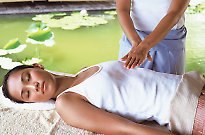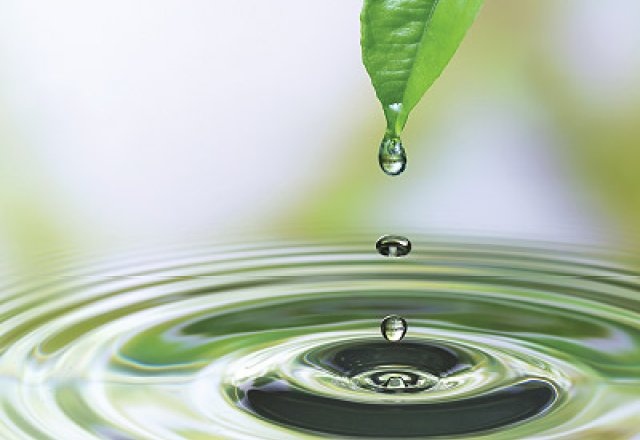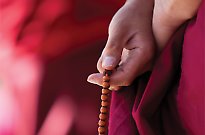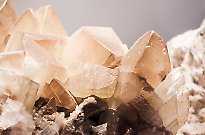
Alternative healing

What we call ‘alternative’ healing is actually a long-standing history of interactive and complementary therapy. The West is only just catching up, discovers David Goding.
Attitudes to health are slowly changing throughout the Western world as many seek out wellness rather than simply being ‘sickness free’. Medical science has done the latter very well, most would admit, and nobody in their right mind would want to get rid of these advancements in a hurry. But the healing arts offer something more – a holistic approach to the body and mind that is gentle, nurturing and often spiritual in nature.
The Complete Handbook of Quantum Healing. “It has clutched to the ideas that disease meant that the body was under attack and defending the body with external substances like pharmaceutical drugs, vaccines, or other therapies was the only way of becoming well.”
Even in the field of modern medicine the complexity of the body is emerging, she says.
“Rather than being a series of linear biochemical pathways, the body is now being viewed as an interrelated web of genes, proteins, pathways and messengers. We now know that medicine doesn’t work in silos. Rather, the once-separate systems of the body envisioned by allopathic medicine are now being lumped together, as they have been in traditional medicine like Ayurveda.”
Healing therapies can be used to tackle an individual issue – such as stress, fear, anger, depression, a phobia – or used for general emotional balance and physical wellness. Of course, not everything about all healing arts appeals to all people. Fortunately, there are plenty of therapies to choose from.
“The very moment you make the choice to heal, the process is set in motion,” says Minich. “At that point, we have many healing paths to choose from. Because of the complexity of who we are as people, sometimes it takes more than just one modality to engage the healing process. If we are trying to get to the heart of a particular issue in our lives, like combating stress or boosting our immunity, we can go at it by opening a variety of different doors – maybe by increasing physical exercise, journalling consistently, and repeating powerful affirmations daily. Or maybe just one way will work.
“The bottom line is that we have a multitude of options when it comes to healing whether we’re dealing with warts or arthritis, diabetes or cancer.”
Here’s a few to get you started.
Pranic Healing
Pranic healing is about as far removed from Western medicine as you can get. In its basic form, it can be traced back to the ancient civilisations of Egypt, India and China. Grandmaster Choa Kok Sui, a Chinese-Filipino spiritual leader, is credited with rediscovering and refining the methodology in the 20th century.
Using a specific ‘no-touch’ approach, the art and science of modern pranic healing aims to remove negative or blocked energy and replace it with fresh vital energy, or prana.
Like acupuncture, pranic healing works on the body’s meridians, or lines of energy. However, pranic healing chooses to focus only on the main meridians, along which the major chakras, or energy centres, lie.
It is usually performed while the client is sitting down, in a relaxed state with eyes closed. The practitioner, standing a few feet away, directs the palms toward the client’s body, scanning for energy blockages.
Scanning is a method used by the practitioner to feel the client’s aura and uncover any congestion or stagnation that may be present.
The practitioner will then employ a technique called ‘sweeping’, where they will move the hands down the body, collect any stagnant energy and dispose of it.
To re-energise, the practitioner uses what is referred to as a ‘water pump technique’. Instead of using their own energy, which would result in the practitioner’s energy field becoming depleted, the pranic healer draws energy from external sources, including the sun, air and earth and projects this into the client’s energy field.
Pranic healing claims particular success in treating a range of simple physical disorders such as stomach aches, muscle pain, sore throat and headaches. It can also be used to treat more serious ailments such as hypertension, heart problems and arthritis as well as emotional conditions such as stress, anxiety and depression.
Kinesiology
Kinesiology straddles the fringes of mainstream acceptance like few other healing practices. Having a wide appeal and a wide range of uses, it’s also a difficult one to get a grasp on due to the fact that different practitioners tend to draw on varying techniques.
Adopting many of the principles of Chinese medicine kinesiology is essentially an energy medicine, that aims to locate and correct imbalances in the body’s structural, emotional and chemical energy pathways.
At its core is the idea that the body knows, at a deep, unconscious level, what it needs and that each muscle group is related to other body parts. You simply need to ‘ask’ it. The kinesiologist does this by testing various muscles with gentle manual pressure. Once they’ve located the trouble zone, they work on the area with massage or tapping. Some practitioners use crystals, homoeopathic remedies, magnets or essential oils during the process.
Kinesiology has been used to treat a huge range of conditions, though it’s not recommended for directly treating a known disease. It’s proven to be a popular therapy to assist with depression and anxiety, stress, learning difficulties, digestive and nervous disorders and particularly with allergies, where it seeks to identify the slightest reaction that may in turn lead to another, seemingly unrelated condition, such as a shampoo ingredient leading to catarrh or headaches.
Interestingly, kinesiology has also been used to boost performance – at work, at school, in sport and in relationships – with positive results.
Crystal healing
The beauty, power and symmetry of crystals have long fascinated scientists and healers from Ancient civilisations to the present day.
Unique in natural form, they have proved incredibly adaptable to a wide range of uses due to their unusual ability to convert mechanical pressure into electrical energy and vice versa. This phenomenon is known as the piezoelectric effect.
Inventors have used them to create – among other things – holograms, record players, micro-chips, lasers and radiation detectors. Currently, NASA is experimenting with growing high-tech zeolite crystals in space as possible nuclear waste scavengers.
Crystal healers take it one step further, believing that crystals have the power to promote healing of the body through the process of resonance. Some even believe that crystals have a soul.
A crystal healer or therapist works with you one on one. They discuss your health, establish your needs or the details of any illness you may have. They will then ask you to lie down and place a variety of different crystals on the seven chakra points or energy points on the body that run from the base of the spine (the root chakra) to the top of the head (the crown chakra).
Specific breathing techniques are used to guide you into a deep state of relaxation as the crystals take effect.
Reiki
You may walk out of a reiki session feeling like you’ve just had a relaxing massage, and in a way you have. It’s just that it’s a massage of your energy rather than your muscles.
At the heart of reiki is the notion of energy transference between people, in this case between the experienced practitioner and a willing client. Lying down, the practitioner gently places their hands on your body, or slightly above the body, in a sequence of positions, in order to rebalance your energy so that it can flow unhindered, like a river.
You may feel a tingling sensation, twitching, warmth or coldness during the session and likely to feel energised and a little ‘spaced out’ following treatment.
Great for those experiencing high levels of stress and anxiety, reiki can also be used as an energising therapy for people experiencing high levels of fatigue and tiredness.
Colour healing
Colours surround us on a daily basis – in our house, at work, on the clothes we choose to wear and on products we are attracted to. Colours affect our mood in a myriad of different ways and, according to the practice of colour therapy, can also have a profound effect on our health and wellbeing. Used correctly, colour can even be used to treat illness.
Developed by German naturopath Peter Mandel, colourpuncture therapy refines the colour therapy approach by employing the use of a small hand-held torch in which different-coloured glass rods are inserted. Adopting the core principles of acupuncture, colourpuncture focuses the torch on meridian lines or energy pathways that run through the entire body for the purpose of healing. Unlike acupuncture, however, there is no actual puncturing of the skin.
The central colours used are purple, blue, turquoise, green, yellow, orange and red. All have their own unique properties; for example, blue has a decongesting effect able to reduce spasm, yellow is the colour of the lymphatic and glandular systems and red relates to the health of the heart and lungs. In addition to these basic colours there is an infrared torch used for pain relief.
Like acupuncture, colourpuncture can be used to treat a wide range of conditions, from toothache and high blood pressure to anxiety and depression. Interestingly, it has proved particularly popular as a treatment for cellulite as well as a prenatal tool and general detoxifier.
Cranial osteopathy
Cranial osteopathy, as the name implies, is all about the head, or to be more precise, the skull.
It was a long-held belief that as the head grows, the skull becomes fixed, fused together around the brain for the rest of its natural life. It took a US osteopath to question this assumption and 30 years of research to completely turn it on its head, as it were.
It was the early 1900s when osteopath Dr William Sutherland, then a student, observed that joints in the skull appeared to be designed for movement. His obsession with proving that these bones did in fact move not only disproved the conventional medical wisdom of the day but also formed the foundation of cranial osteopathy.
It’s now believed that the skull moves to a cranial rhythm, contracting and expanding up to 14 times per minute. Using a range of subtle hand holds, the cranial osteopath can release any restrictions to the cranial rhythm that have resulted from birth trauma or physical and emotional stress and in doing treat a range of conditions, from infant problems such as colic and reflux to childhood behavioural problems, ear infections, fatigue, compromised immunity, headaches and back and neck pain.
Browse more health advice and don't forget to visit us on Facebook.


